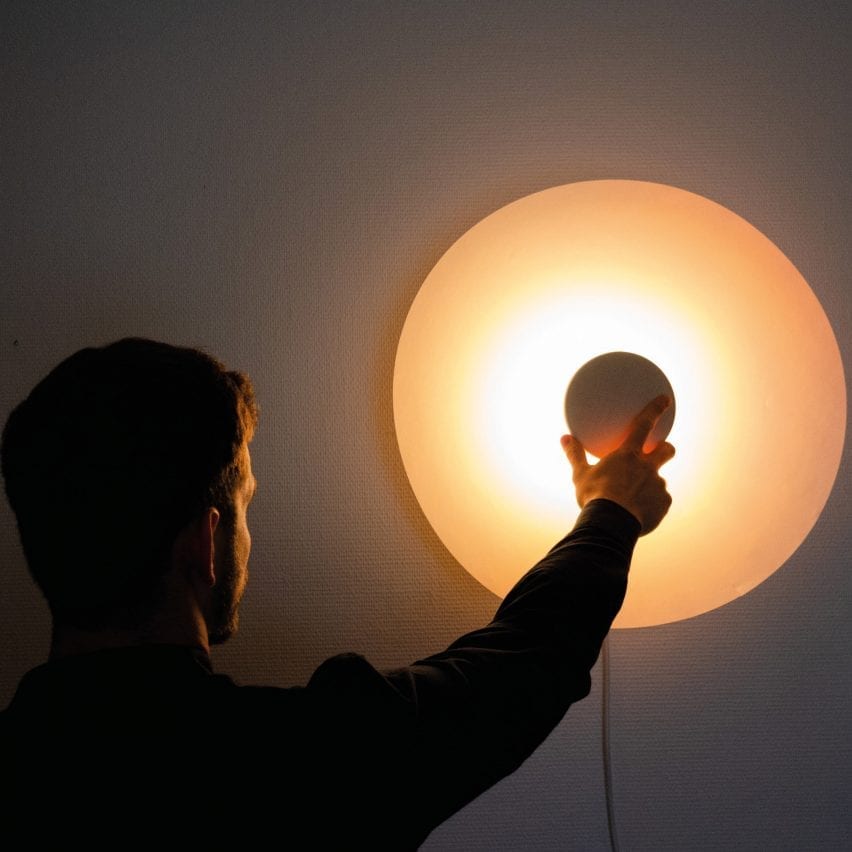
A chair made from agricultural waste and mycelium, and a bed that adapts to a child as they grow are included in Dezeen's latest school show by students at the Lucerne School of Art and Design.
Also featured is a project that explores how natural light can impact human wellbeing and sustainable snowshoes made from recyclable parts.
Lucerne University of Applied Sciences and Arts
School: Lucerne University of Applied Sciences and Arts
Courses: Bachelor Object Design
Tutors: Gabrielle Alioth, Suzan Curtis, Mònica Gaspar, Florian Hauswirth, Thai Hua, Tina Moor, Michael Niederberger, Tido von Oppeln, Samuel Perret, Andreas Saxer, Laurin Schaub, Christoph Schindler, Christof Sigerist, Dagmar Steffen and Nora Wagner
School statement:
"This programme asks: what is the aim of design today? What is my responsibility as a designer? What does the world need? Object designers need to think and design products for a future-proof society. This includes thinking about new needs, material cycles and behavioural economics.
"The Object Design course consciously positions itself in niche situations: between existing job categories, established product genres, manufacturing techniques and material groups; between socio-culturally anchored patterns of thinking, behaviour and diet. In their bachelor degree, object designers build on their passions, experiences and previously gained skills to formulate their unique outlook."
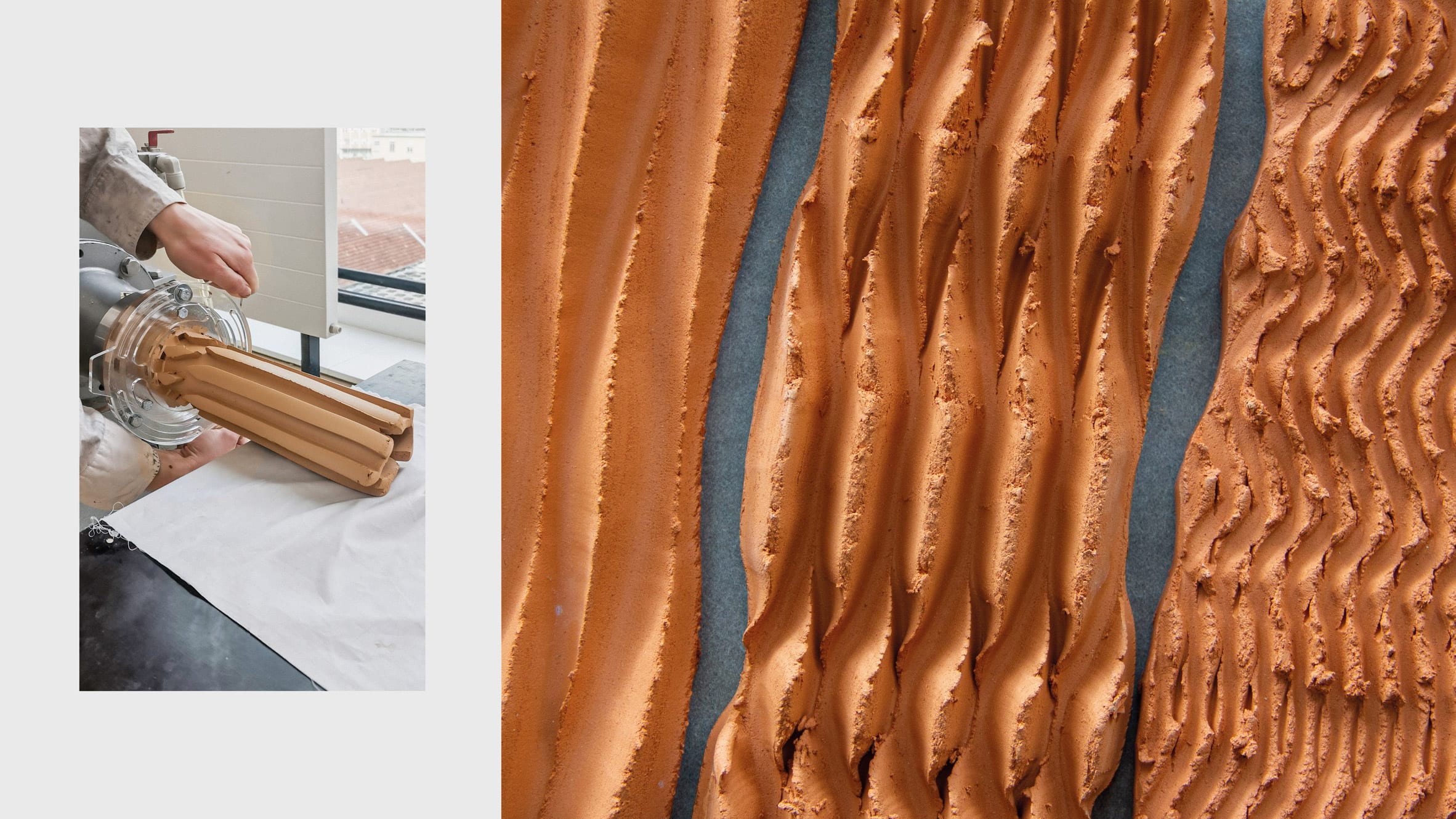
Pressed Motion – The Vocabulary of Dynamic Extrusion by Martina Häusermann
"Extrusion processes are usually used to produce continual strands, such as steel profiles or clay bricks. But what are the results when a motion is introduced into the constant flow?
"Martina Häusermann explores the potential of dynamic ceramic extrusion at the crossover between design, artisanship and industry. The controlled reprogramming of the production process – via the development of moveable dyes – allows innovations to be generated out of the process itself.
"Dynamic structures, shape transitions and interfusings open up myriad applicational possibilities. By having elaborated the technical and formal fundamentals, the perspectives for the broad potential are evident – for serially finished unique items in the craft industry or industrial adaptations in architecture."
Student: Martina Häusermann
Course: Bachelor Object Design
Tutors: Mònica Gaspar, Florian Hauswirth and Laurin Schaub
Email: martina.haeusermann@bluewin.ch
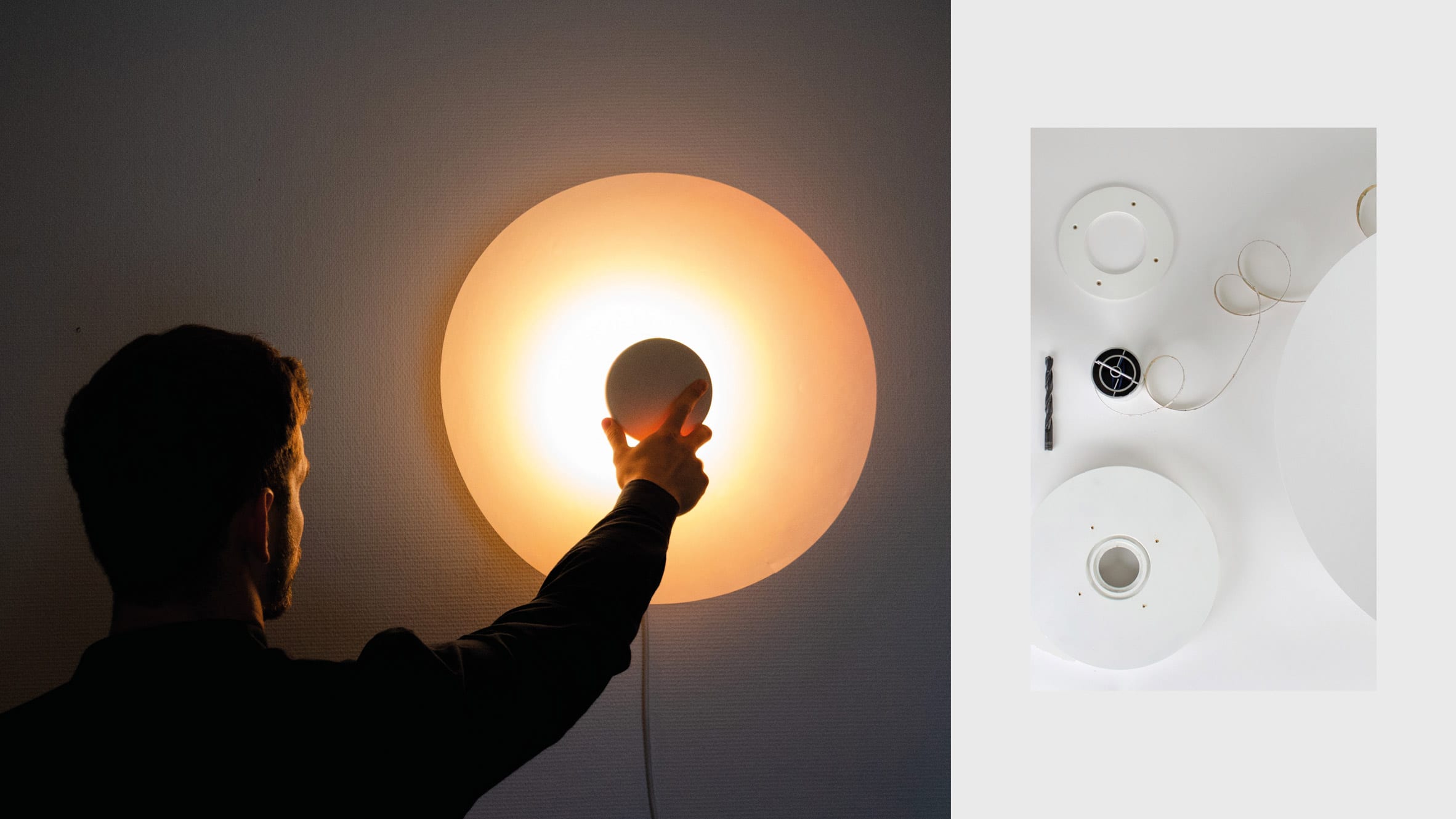
Atua by Andrea Schürmann
"We are surrounded by light, day in and day out. It helps us perceive colours, objects and spaces while the natural rhythm of light and dark provides our body clock with a structure.
"Andrea Schürmann explores light and its impact on human wellbeing, focusing on how dynamic light should also be appreciable in living rooms. By rotating the object's core, the colouration and the brightness of the light can be changed.
"The various lighting moods and the contact with the object have an emotional impact and heighten our wellbeing. The lamp aims to encourage a consciousness for the influence that light has on us as humans and inspire a more natural interaction."
Student: Andrea Schürmann
Course: Bachelor Object Design
Tutors: Mònica Gaspar and Christof Sigerist
Email: schuerm.andrea@gmail.com
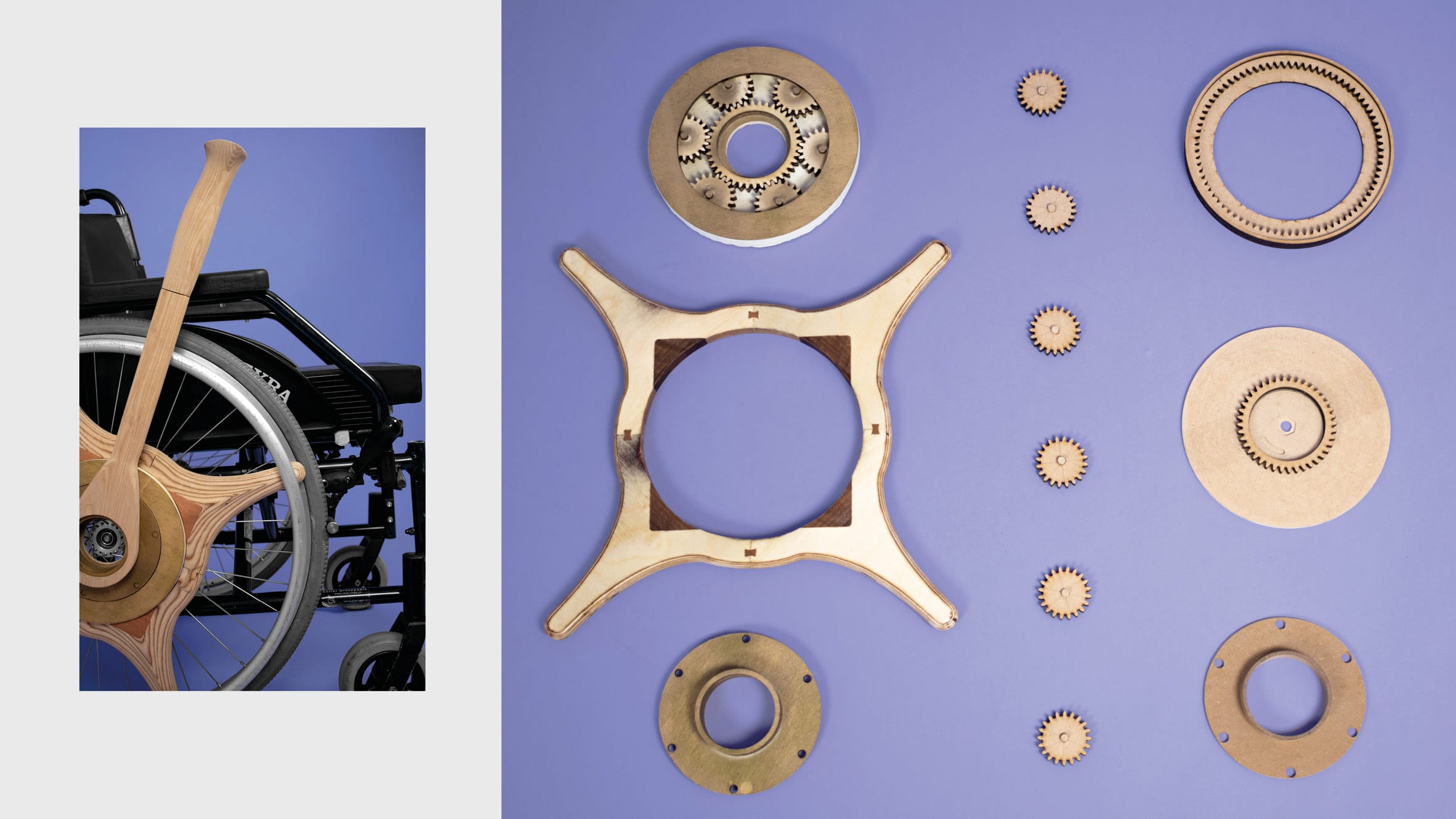
Levi One – An Attempt at Accessible Design by Sina Julia Spring
"We all use aids in our everyday lives – whether it is a spoon for our cereal or scissors for cutting paper. Often in disabled people's day-to-day lives, aids are omnipresent, and without them, life would be unmanageable for many.
"This project examines the use of manual wheelchairs – their inadequacy and available solutions to improve them. With an environmentally friendly and elegant object, the aim is to establish easy access to design without losing functionality. Natural materials and a soft design vocabulary are combined with a non-medical appearance to create a sign of equity in design."
Studnent: Sina Julia Spring
Course: Bachelor Object Design
Tutors: Gabrielle Alioth and Andreas Saxer
Email: sina@springs.ch
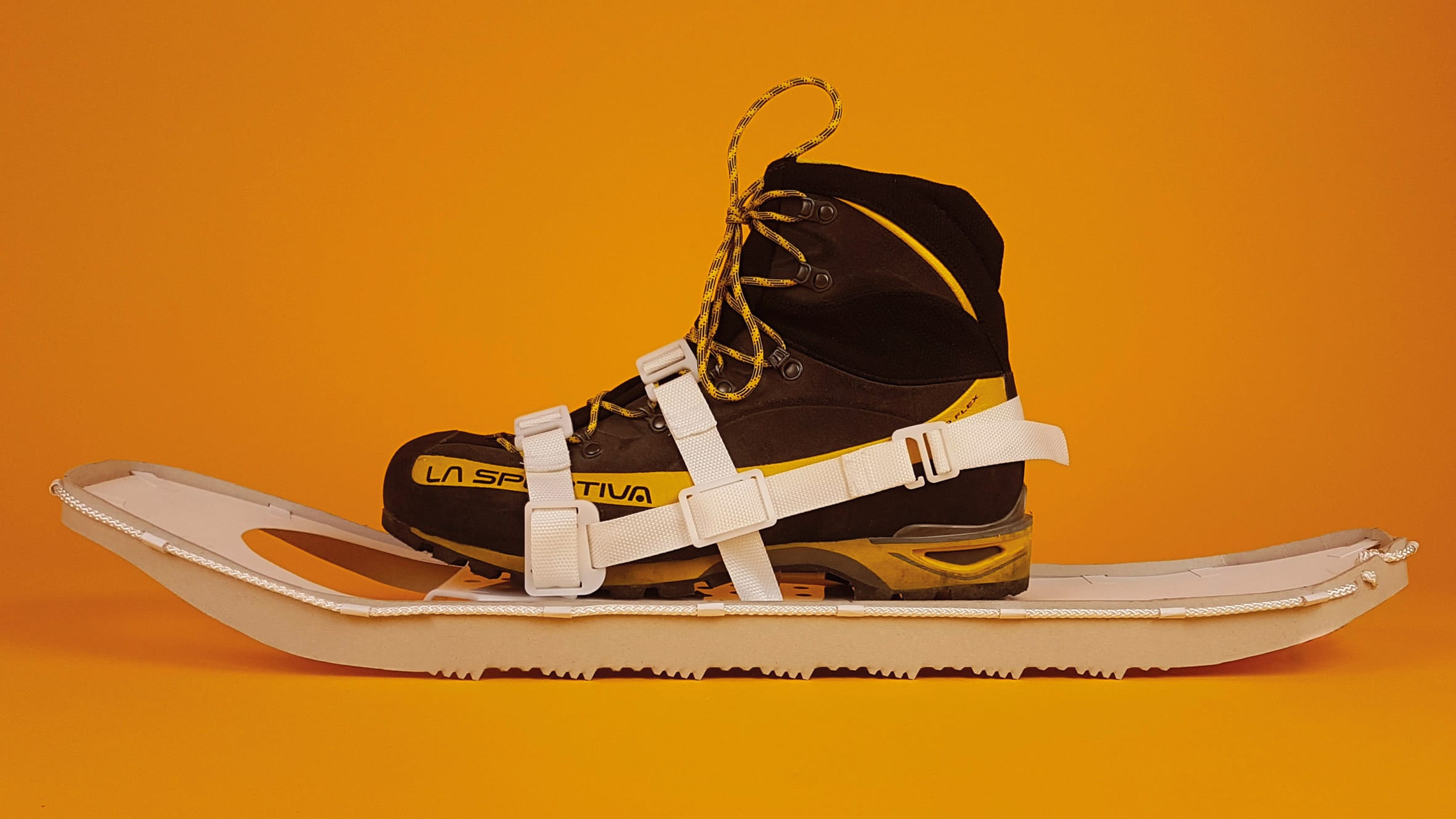
Sustainable Snowshoes – So We Can Still Enjoy Snow in the Future! by Joël Reinmann
"Sustainability is becoming an increasing issue in our society and calls sustainable redesigns of day-to-day objects. In sport and outdoor articles, robust performance is a central criterion, and in this case, Joël Reinmann has designed sustainable snowshoes with performance in mind.
"Joël Reinmann has developed the snowshoes with the requirement that all of the components can be separated, replaced or recycled without the need for special tools. Together with non-toxic nanomaterials – for which the recycling process already exists – the simple disassembly means that a cyclical economy is achieved."
Student: Joël Reinmann
Course: Bachelor Object Design
Tutors: Prof. Dr. Dagmar Johanna Steffen and Christof Sigerist
Email: reinmanndesign@gmail.com
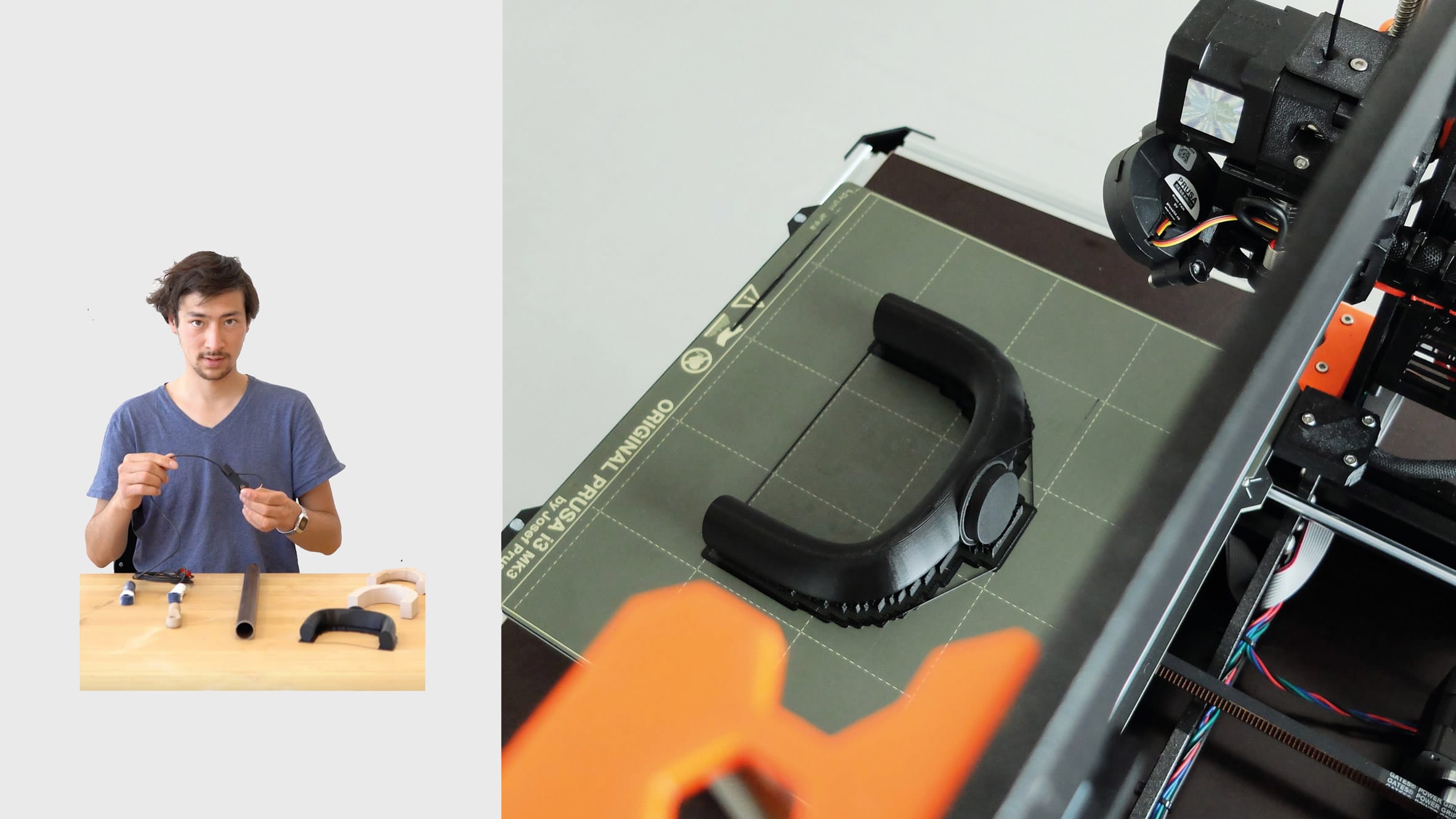
Metal 3D Printing: Also Appropriate for Designers? by Yuri Maurer
"This project asks: can metal be printed in 3D? If yes, can product design students usefully adopt the technology?
"In search of answers, Yuri Maurer sets off on a journey through the technical reality of product development. At the crossover between design and engineering, he critically examines product development methods and familiarises himself with the potential and limits of computer-aided design and fabrication. This knowledge he has used to design individual bike forks."
Student: Yuri Maurer
Course: Bachelor Object Design
Tutors: Prof. Dr. Dagmar Johanna Steffen, Thai Hua
Email: yuri.maurer@gmail.com
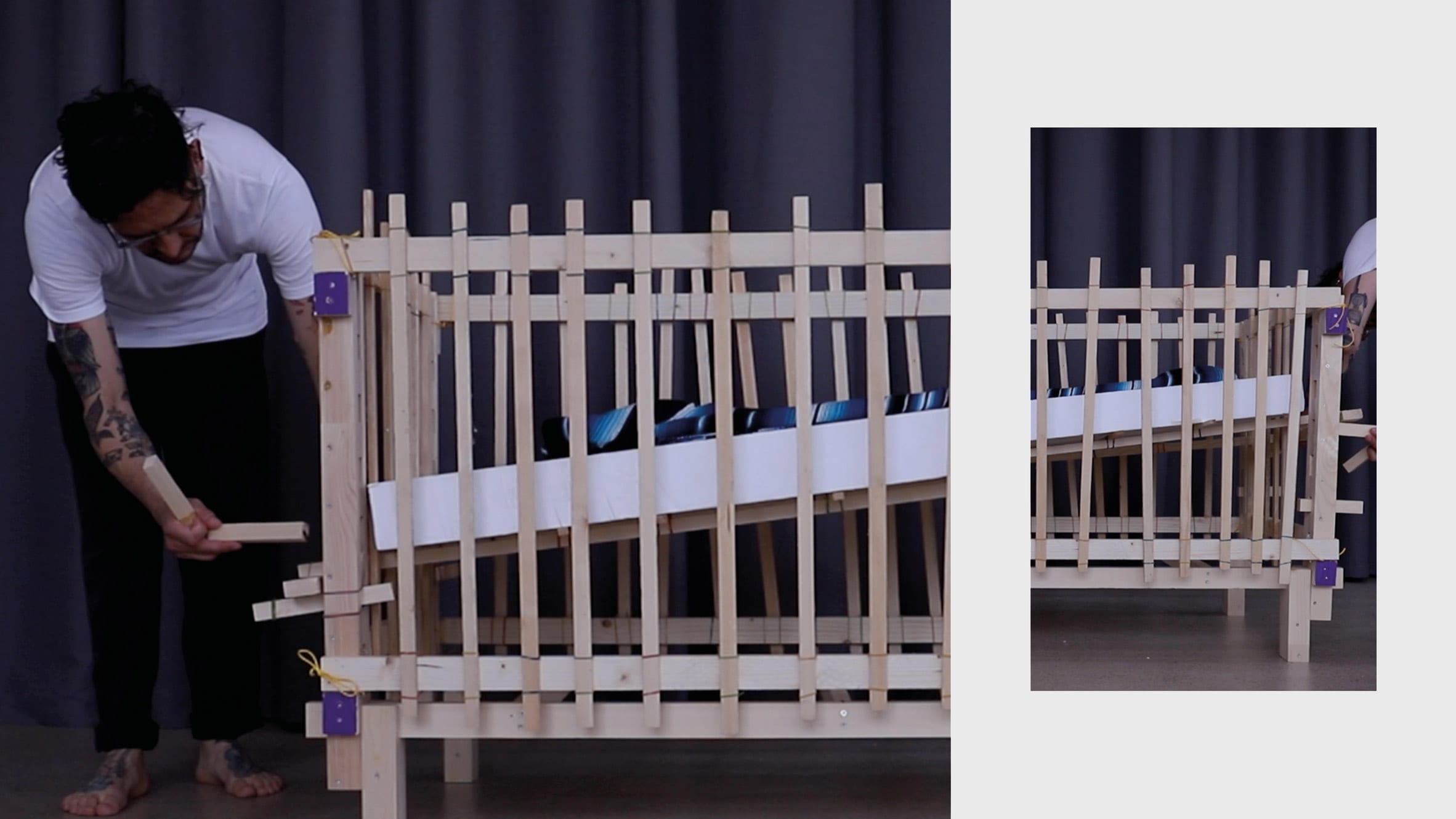
In a nutshell by Andreas Vögtlin
"Andreas Vögtlin's in a nutshell furniture design combines a bed and a nappy-changing table in an integrative way. It accompanies the child as it grows, from birth to the age of five and provides quality-conscious parents with a sustainable alternative to cheap, industrially manufactured furniture.
"Inspired by the construction of traditional Swiss farmers' houses and Japanese craftsmanship, the combined piece of furniture dispenses with screws. Instead, in a nutshell, it can be assembled and disassembled via slot-in connections. The high-quality wood guarantees high durability – not only for one child, but for each child the bed is passed onto."
Student: Andreas Vögtlin
Course: Bachelor Object Design
Tutors: Prof. Dr. Dagmar Johanna Steffen and Thai Hua
Email: a.voegtlin@hotmail.com
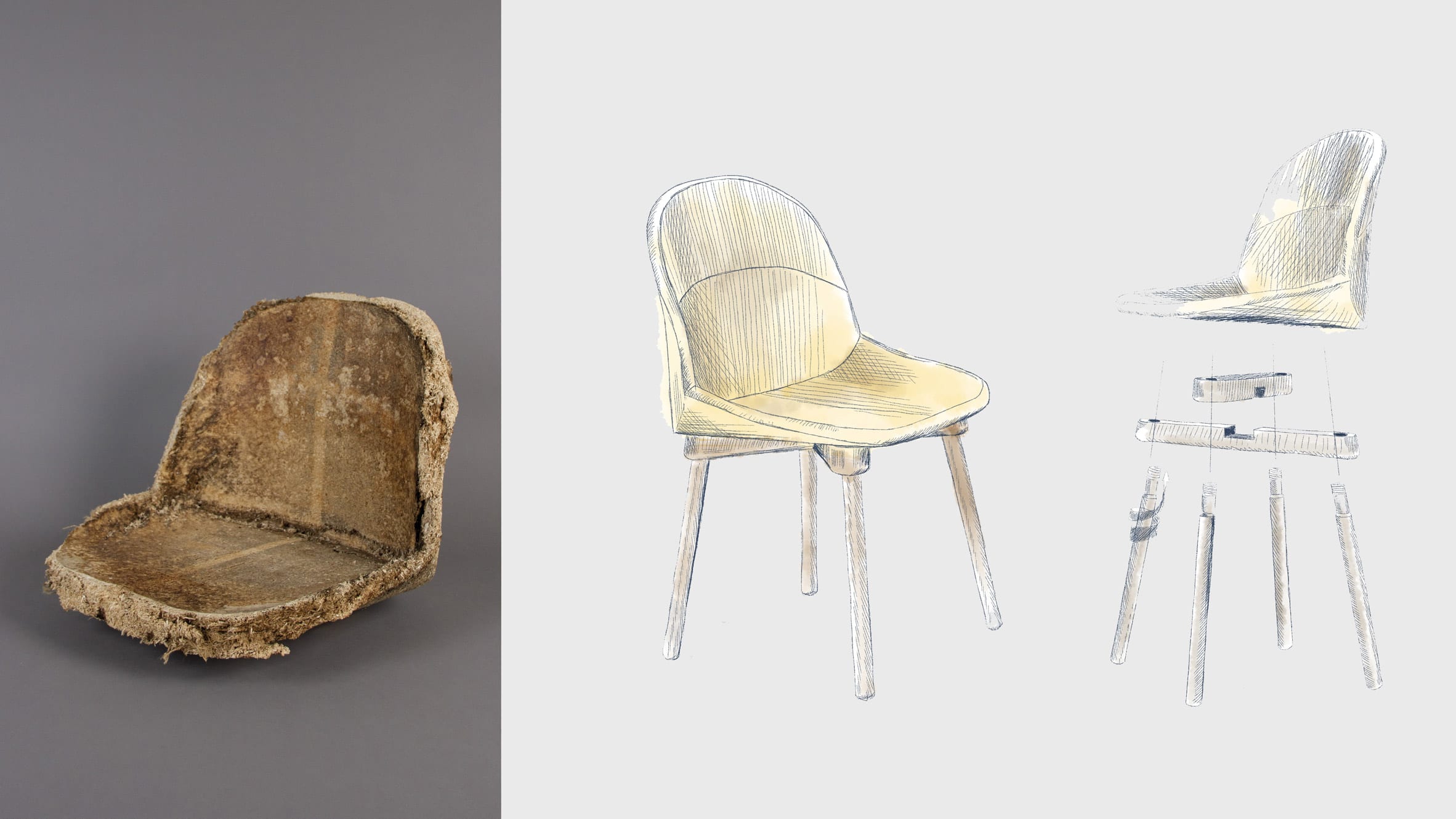
Mycelium Furniture by Valentin Küng
"Future-proof product design ought to be thought through to its conclusions and provide solutions even when the product becomes obsolete. Furthermore, it is time to integrate products into recycling, thus reusing the planet's finite resources repeatedly.
With Mycelium Furniture, Valentin Küng aims to develop a chair that consists entirely of renewable raw materials, which can be composted at the end of its life. Together with the start-up Mycrobez, to this end, he has developed a material that consists purely of agricultural waste, held together by a fungus."
Student: Valentin Küng
Course: Bachelor Object Design
Tutors: Gabrielle Alioth and Florian Hauswirth
Email: valikueng@bluewin.ch
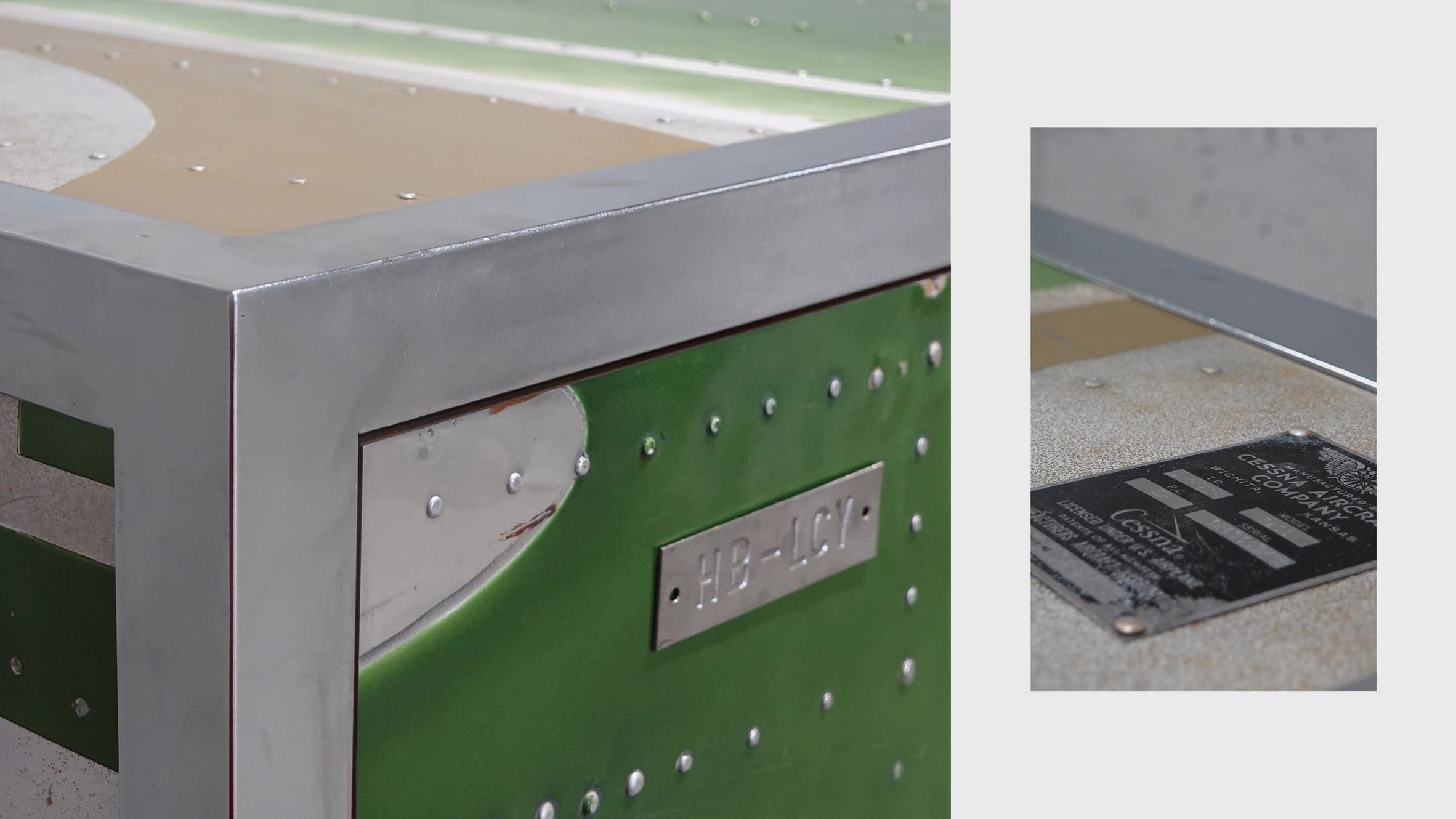
Fracht – Design The Other Furniture by Tim Frank and Renato Rüfenacht
"Do you remember the times when objects were still made by hand? The enduring value with which our parents and grandparents produced things is no longer reachable. As a new generation, we believe that we have an obligation to treat these industrial, cultural goods as our heritage: to find them, care for them, and preserve them.
"Tim Frank and Renato Rüfenacht celebrate a contemporary style of craftsmanship that blends the past and present. Their passion for the traditional materials of wood and metal, combined with artisanal talent, has great potential and results in new objects.
"Aged machines, iconic components and historical motor parts from Switzerland's industrial past – that otherwise would have been condemned to the melting furnace – are collected, reworked, restored and then processed to form bespoke objects or unique items of furniture."
Student: Tim Frank and Renato Rüfenacht
Course: Bachelor Object Design
Tutors: Prof. Dr. Dagmar Johanna Steffen and Andreas Saxer
Email: welcome@fracht-design.ch
Partnership content
This school show is a partnership between Dezeen and the Lucerne University of Applied Sciences and Arts. Find out more about Dezeen partnership content here.
The post Eight object design projects from Lucerne School of Art and Design students appeared first on Dezeen.
from Dezeen https://ift.tt/3ddqudI
No comments:
Post a Comment